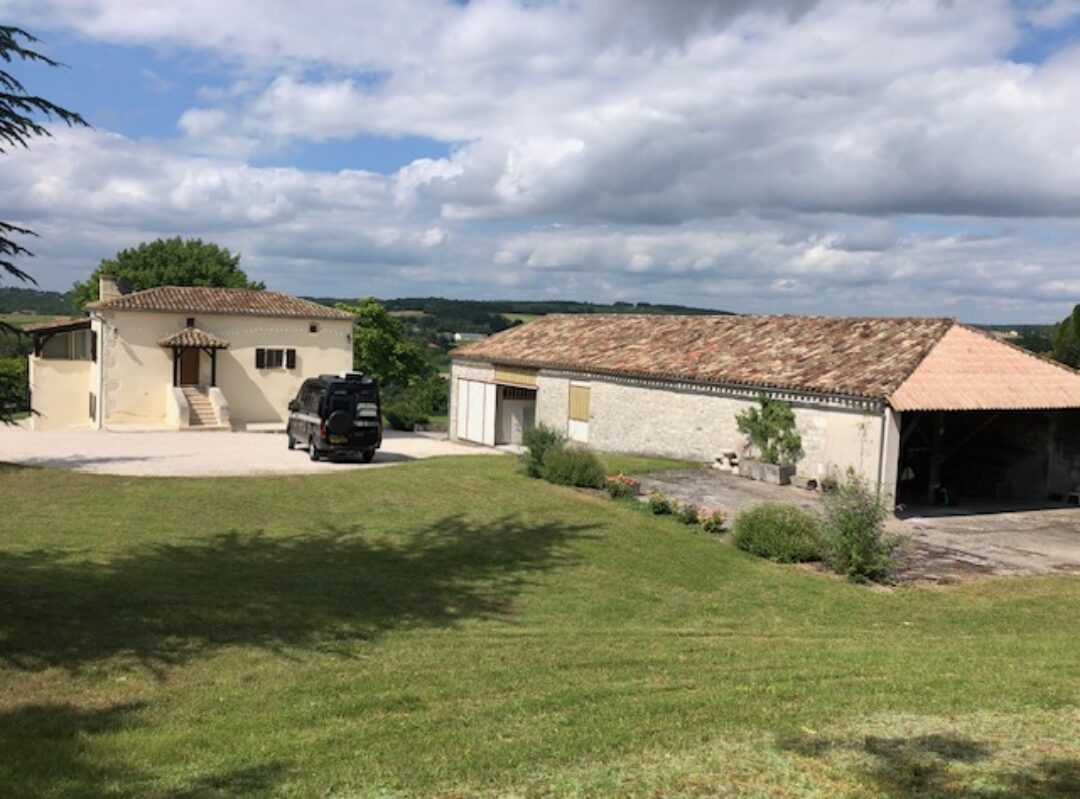Our days in Brengues have been a mixture of exploring on foot, bicycle and motorcycle. Our two motorcycle trips out have taken us both north and south of the campsite. Even though we’re travelling relatively short distances, there are lots of hidden gems to see, so we’re off and back on the bike quite regularly for photo opportunities and wandering – courtesy of an ever patient rider, Joe. To the south we did a circular tour via Cajarc, up over the hills and down to the Lot valley. The route took us high up on the Causses via Béduer and Faycelles, with their dry stone walls and round dry-stone gariottes, or cazelles, typical of this area and providing shelter and storage for agricultural workers.


Our first stop was at the Chateau de Larroque-Toirac, an impressive part-troglodyte castle, with origins back to the 13th century and set into the rock cliff in a defensive position overlooking the Lot river. The rock behind the castle houses a number of caves which gave protection and accommodation to the locals. Apparently it was captured several times by the English during the Hundred Years War.

From there we made our way to Cajarc, stopping en route again at the wonderful view point – the Saut de la Mounine. This looks out over a loop in the Lot river, bounded by cliffs on either side and a fertile plain in the valley floor. The viewpoint owes its rather exotic name to a local myth involving a hermit and his monkey – mounine being an old local word for monkey. The myth can be found here if you’re interested. https://www.thegoodlifefrance.com/the-french-legend-of-the-ghostly-roaming-monkey/

On again to Carjac which sits on the Lot river. It’s called the Cité du safran as saffron has been grown in the Quercy region since the 11th century, although production only restarted in the Cajarc area in 1997. The main flowering period and harvest is in October/November so unfortunately there’s nothing for us to see at present. The town is also the birthplace of Françoise Sagan, one of France’s best known writers. Lunch in Cajarc provided a very timely and fortuitous shelter from a heavy and unexpected thunderstorm, which cleared just as quickly in time for stall holders to set up an afternoon market, and for us to get back on the bike.
Our circuit to the north of Brengues took us first to the Vers river valley via the picturesque hamlet of Saint-Martin de Vers and then onto Labastide-Murat. The town itself was fairly unprepossessing but it’s claim to fame, and now it’s name, is Joachim Murat, born of very humble beginnings in the village and who rose to become Marshal of France and also Napoleon Bonaparte’s brother-in-law after marrying his sister. The name of the town was changed from Labastide-Fortunière to honour him.

The road continued via Livernon to Château d’Assier, tucked away behind the village square of Assier. The castle was built in the early 1500s in the Renaissance style of castles in the Loire region that was beginning to spread elsewhere in France. Only one main side of the original quadrangle now remains, the rest having been pulled down in the 18th century and sold for building materials, but it’s nonetheless still very impressive.



